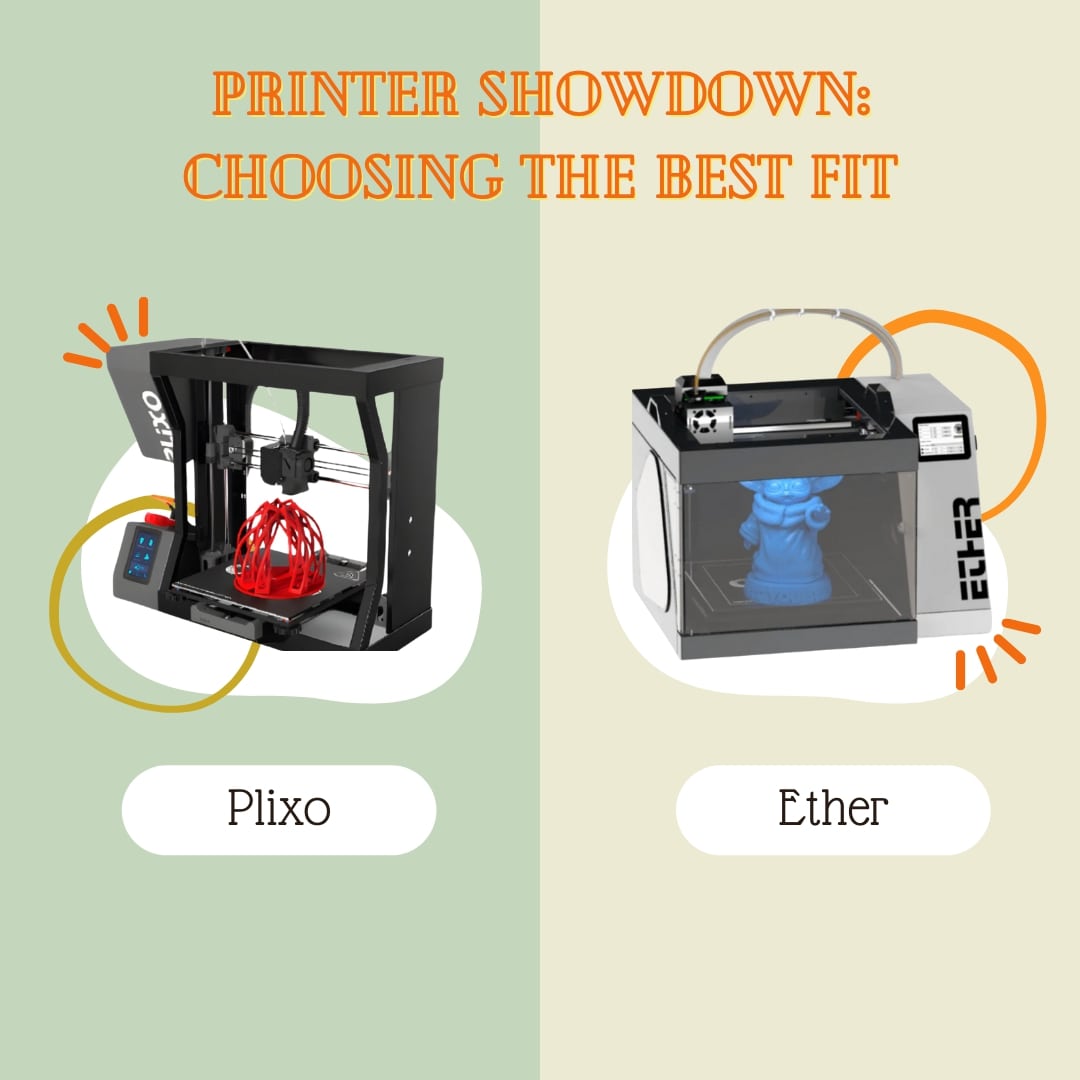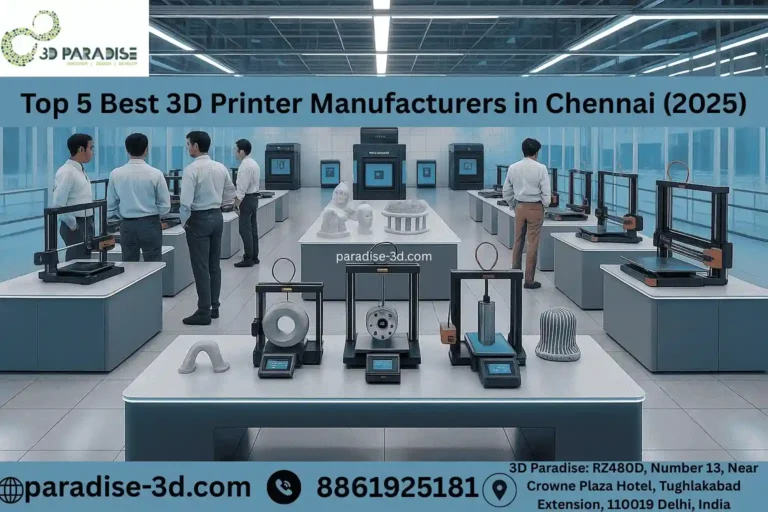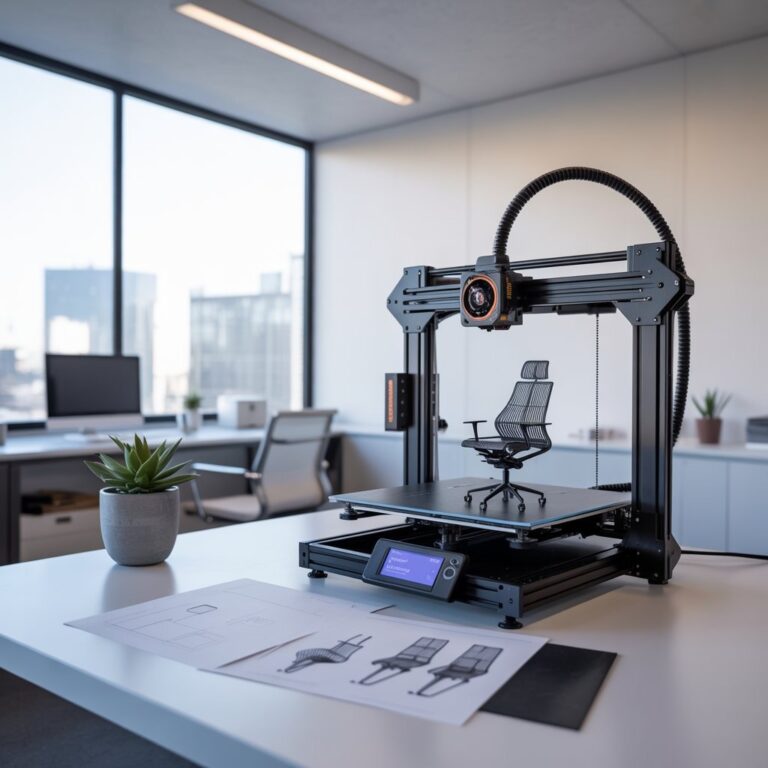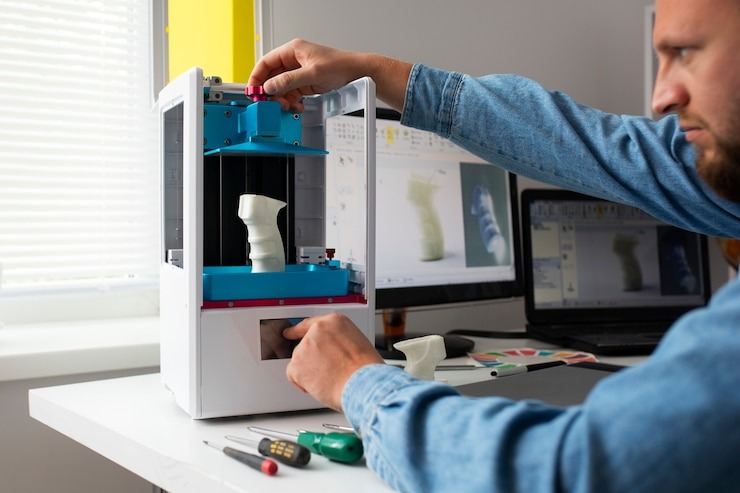Ether vs Plixo: Simple Comparison of the Best 3D Printers by 3D Paradise
3D Paradise has an extensive library of printers for varied applications in 3D technology. Ether and Plixo best suitable for both new and professional users. Both these machines are almost matching in their technical specifications; the biggest difference, however, lies in the print bed capacity. Ether 200x200x200, And Plixo 300x300x300 mm. This guide will guide you about both machines so you can take the best one according to your needs.
Introduction to Ether and Plixo
Basically, they both belong to the family of their high-quality 3D printers and function almost the same. They enable access to a lot of materials with great precision, addressed at both beginners and professionals. The only major difference is the bed size- Ether is more compact for a smaller bed, unlike Plixo with larger prints area.
Design and Build Quality
Ether: Compact, lightweight, and easily portable. Good for home or small office use.
Plixo: Larger and heavier, built upon a sturdy metal frame. Good for professionals and larger projects.
| Specification | Ether 3D Printer | Plixo 3D Printer |
|---|---|---|
| Printing Speed | 60-80 mm/s | 60-80 mm/s |
| XY Positioning Accuracy | 50 microns | 50 microns |
| Z Positioning Accuracy | 25 microns | 25 microns |
| 0.25 mm Nozzle Resolution | 150 - 60 microns | 150 - 60 microns |
| 0.4 mm Nozzle Resolution | 200 - 60 microns | 200 - 60 microns |
| 0.6 mm Nozzle Resolution | 300 - 60 microns | 300 - 60 microns |
| 0.8 mm Nozzle Resolution | 600 - 60 microns | 600 - 60 microns |
User Friendly
Ether: Operate very simple user friendly interface touch.
Plixo: Operate very simple user friendly interface touch for make smooth your 3d printing journey.
Compatibility with Filament
They both use nearly identical materials:
- PLA
- ABS
- PETG
- TPU (Ninja Flex)
- ASA
- TPE
- HIPS
- PVA
- Polycarbonate
And many others, generalizing to over 20 materials in total.
You can change filaments used in both machines.
Print Bed and Build Volume
Ether is 200x200x200 mm printing space. The printing area of Plixo is larger: 300x300x300 mm. The heated cast aluminum print bed is a common feature of both printers, enhancing adhesion and overall print quality.
The Ether’s bed works with temperatures ranging between 60 and 130 degrees Celsius. The temperature range for the Plixo is from 60 to 130 degrees.
Cooling and Heating System
These all types have:
Nozzle temperature: 175-300°C
Heated beds to prevent warping and improve print quality.
Software and Connectivity
Support both of the following:
MacOS, Windows and Linux
USB, SD-card and Pen Drive (U Disk) support
Plixo Wi-Fi allows for control and monitoring by means of remote access.
Maintenance and Durability
Ether: Simple, compact design-in easy maintenance.
Plixo: Strong metal frame-for long-lasting use and heavy-duty projects.
They are all durable and reliable.
Which One Should You Choose?
Ether is the best solution for small projects whenever used in homes and learning because it is small and user-friendly. For professional use, select Plixo, as it has Wi-Fi for remote printing with power failure protection.
FAQs
Answer. For the beginning, Ether is better because of its simple operation with a compact design.
Answer. Yes, Plixo has a large print bed to print much larger, more detailed prints (300x300x300mm).
Answer. Yes, one can print remotely the machine with the Wi-Fi capability, adding to its flexibility and convenience.
Answer. Yes, both printers are compatible with the same filament and materials.
Conclusion
Both the printers, Ether and Plixo, are superb 3D printers with very similar specifications. Ether can be taken if one desires something to be much compact. On the other hand, Plixo is the one if you need a bigger area of print. It depends on the size required as well as the needs of the project on which you decide.








